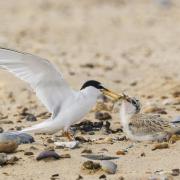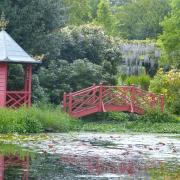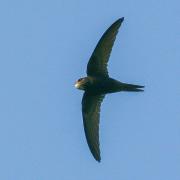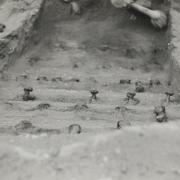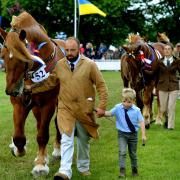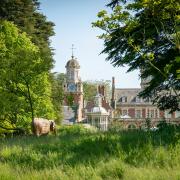Red Kites are now a regular sight in the skies over Suffolk. They're a huge success story, brought back from the brink of extinction in the UK. In the 1970s there were just 16 pairs, found only in the Welsh mountains.
But re-introduction projects have seen this majestic bird make a spectacular recovery. There are now around 4,600 breeding pairs in the country and I see them regularly over my house in Bury St Edmunds and hear its call, an elegant whistle.
The story of the red kite's less than positive past is a familiar one with raptors. Prey animals have a long history of persecution. In the 16th century, Henry VIII put a bounty on 'vermin' or any animal that threatened farmland, including red kites. Furthermore they were victoms of egg collectors until the 1950s and 1960s when this practice became illegal.

Another common misconception is that red kites kill small pets or sheep. In fact, they're happiest feeding on road-kill - rabbits, birds and other carrion - which expends far less energy than hunting. For such a large bird, and in raptor terms, red kites have rather small feet, so they're not as adept as other species in taking live prey such as hares or rabbits. They usually hunt for worms, and take small mammals like voles and rats should the opportunity arise.
Thanks to conservation efforts, red kites are now one of the most commonly seen birds of prey in East Anglia, and it's a joy to watch them gliding around searching for a meal, sometimes in large groups. If you've ever been to one of the numerous red kite feeding stations around the country - although we don't have any here in East Anglia - or seen them at falconry centres, such as the Suffolk Owl Sanctuary, you will have witnessed their acrobatic flight.

They swoop down and glide around, steering with their large v-shaped tail, a characteristic feature of a red kite and the way to distinguish them from a common buzzard. A fully-grown bird in full adult plumage is one of the UK's most beautiful raptors, with rich browns ranging from a very light tan to a deep reddish, terracotta. They have a beautiful slate-grey head and are stunning to observe in bright sunshine. Young birds are drabber in colour, but still fabulous to see.
It's common to see red kites decorate their nest with all sorts of rubbish that they pick up, from crisp packets to plastic bags -not always safe for the bird - a practice you might associate more with a corvid, such as the magpie. Kites are known for being messy nesters as they tend to pile their nests on top of old corvid nests. Multi-storey living, you might say.

Red kites usually start breeding when they are two years old and are known to mate for life, performing courtship displays each year to renew bonds, if both birds have survived the many dangers of winter. They usually lay a clutch of two or three eggs some time around April, with a few days separating the laying of each egg.
In most pairs the female incubates the eggs while the male goes hunting for food to bring back to the nest. They swap roles from time to time. As the chicks grow larger and their demands for food increase, the female also leaves the nest to hunt. Once the juveniles fledge, the adults remain at the site for another 15 to 20 days and the family gradually disperses.
How to photograph red kites
The easiest way to photograph these stunning birds is to have the highest shutter speed possible, the lowest aperture and the ISO set accordingly to get the correct exposure. I always have normal settings of 1/1000 sec (at least), f/4 aperture and ISO of around 200-400.

Kites are not that fast moving when they're gliding. They fly quite slowly when searching for food, so taking photographs is not too difficult. If they are diving, having a faster shutter-speed will increase your chances of getting a clear image. Practise makes perfect with diving shots; this is also where frame rate can come into play if you have a camera with that facility.




